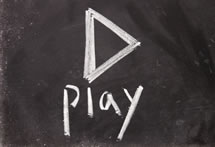Flipped learning now surpasses all other digital trends
 Flipped learning has been on education’s radar for the last two years, with many schools experimenting with a teaching and learning style well-suited for 21st century learning. But new results from a national survey reveal just how popular flipped learning has become.
Flipped learning has been on education’s radar for the last two years, with many schools experimenting with a teaching and learning style well-suited for 21st century learning. But new results from a national survey reveal just how popular flipped learning has become.
According to the recently released 2013 Speak Up National Research Project findings, flipped learning—defined in the survey as using lecture videos as homework while using class time for more in-depth learning such as discussions, projects, experiments, and to provide personalized coaching to individual students—is surpassing all other digital trends in K-12 schools.
Among district administrators, 25 percent identify flipped learning as already having a significant impact on transforming teaching and learning in their district, surpassing other trends such as educational games and mobile apps (21 percent), and even online professional learning communities for teachers and administrators (19 percent).
An additional 40 percent of administrators said they were interested in their teachers “trying flipped learning” this year (2014).
The survey also revealed significant growth in just one year in interest and implementation of flipped classrooms and a drop in concerns about student online access.
Teacher interest in professional development on making quality instructional videos and on how to best use class time in a flipped classroom remained high, but this concern among administrators has declined while some are beginning to provide this training.
“We know from other research that teachers who are flipping their classrooms report higher student achievement, increased student engagement and better attitudes toward learning and school,” said Kari Arfstrom, executive director of the Flipped Learning Network. “Many flipped teachers report that their job satisfaction has improved and they are feeling re-energized, so we are excited to see more teachers and administrators looking to implement this model in their schools.”
(Next page: More revealing statistics on flipped learning)
Speak Up 2013 flipped learning findings include:
• One out of six math and science teachers are implementing a flipped learning model using videos that they have created or sourced online.
• 16 percent of teachers say they are regularly creating videos of their lessons or lectures for students to watch.
• 45 percent of librarians and media specialists are regularly creating videos and similar rich media as part of their professional practice.
• 37 percent of librarians are helping to build teacher capacity by supporting teachers’ skills in using and creating video and media for classroom use.
• Almost one-fifth of current teachers have “learning how to flip my classroom” on their wish list for professional development this year
• 41 percent of administrators say pre-service teachers should learn how to set up a flipped learning class model before getting a teaching credential.
• 66 percent of principals said pre-service teachers should learn how to create and use videos and other digital media within their teacher preparation programs.
• 75 percent of middle and high school students agree that flipped learning would be a good way for them to learn, with 32 percent of those students strongly agreeing with that idea.
“These results show that both more professional development for teachers and tapping into librarians and media specialists to support teachers’ fledgling implementations of flipped learning show great promise,” said Arfstrom.
For more information on Speak Up, as well as more statistics on school use of flipped learning, read the report.
- #4: 25 education trends for 2018 - December 26, 2018
- Video of the Week: Dealing with digital distraction in the classroom - February 23, 2018
- Secrets from the library lines: 5 ways schools can boost digital engagement - January 2, 2018

